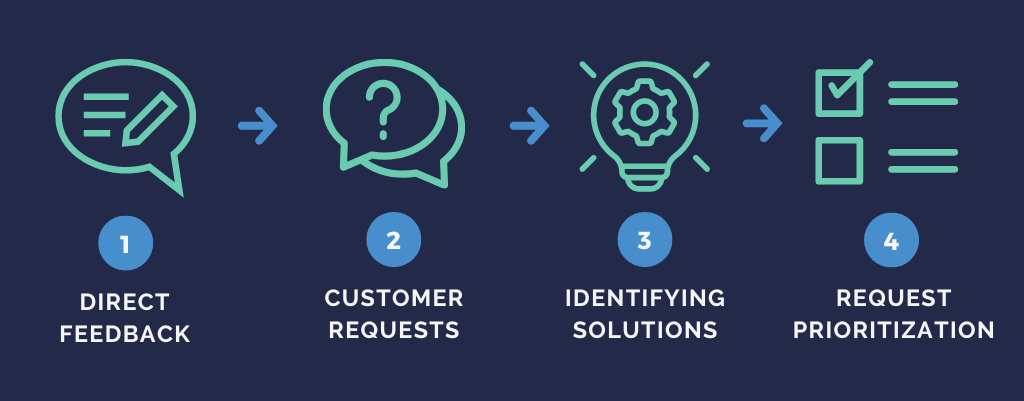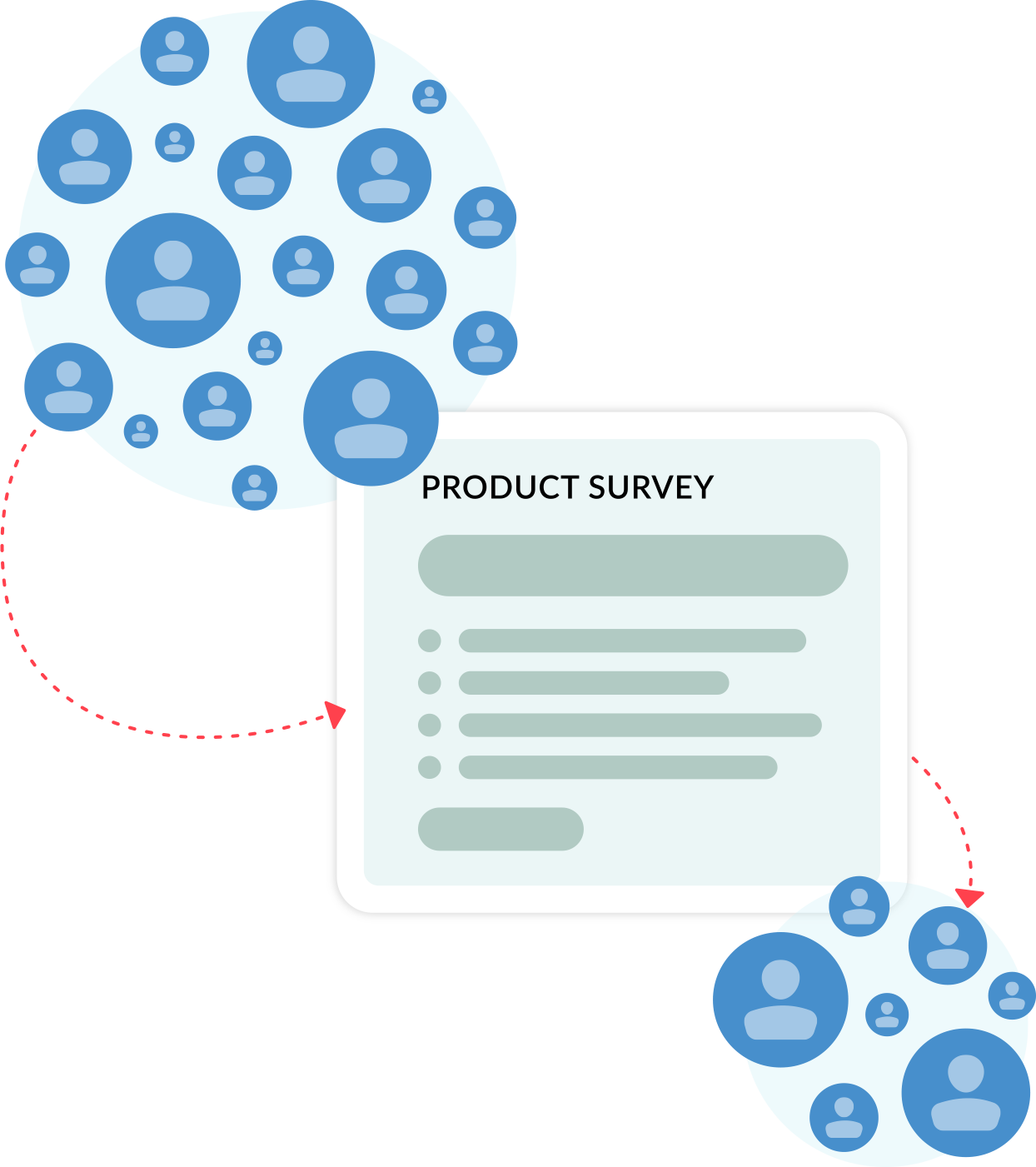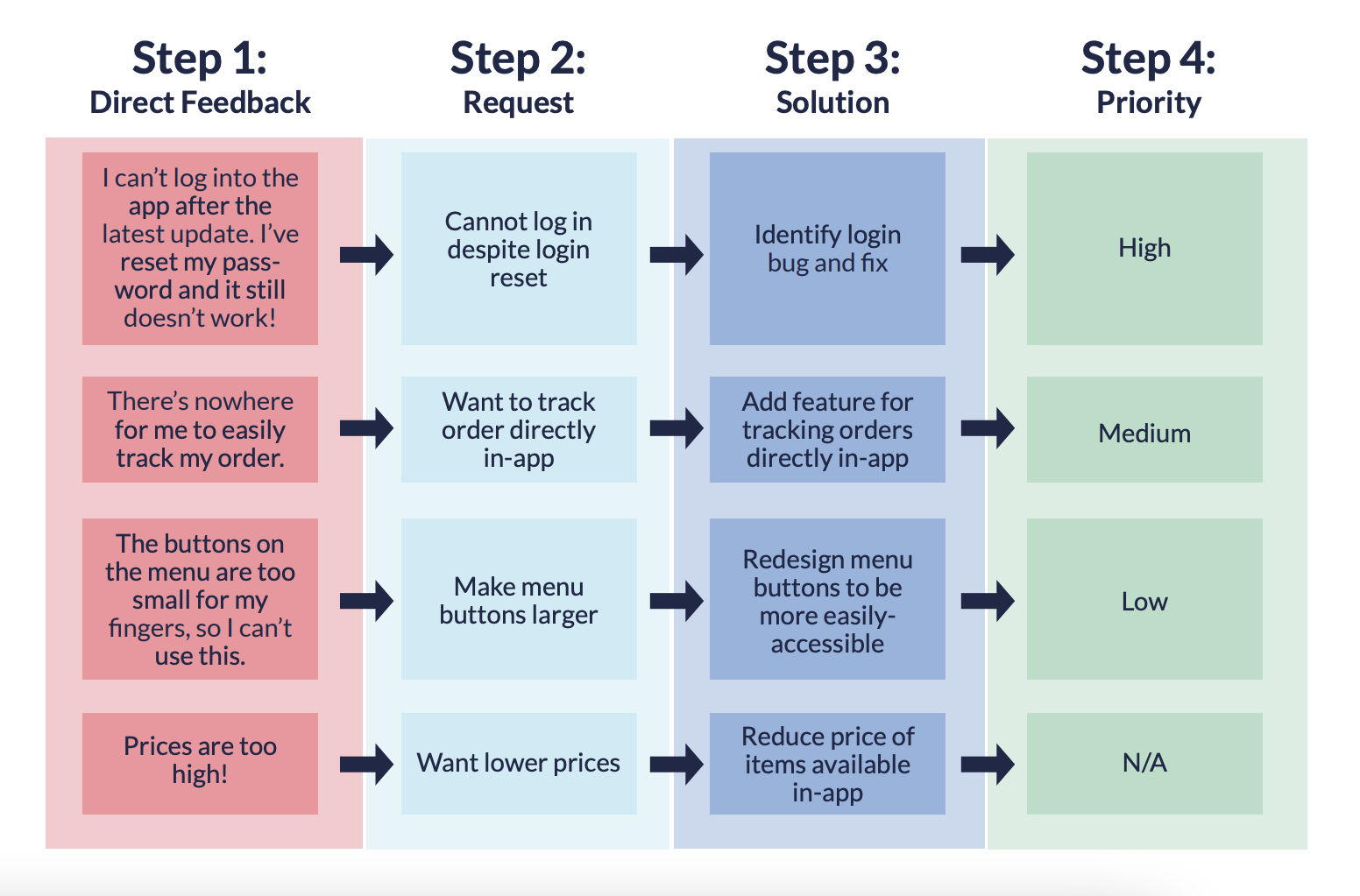Understanding the Voice of the Customer (VoC) for digital products isn’t easy. Hint: that’s why so few companies even try to do it, and even fewer do it well! You might be drowning in endless questions like, “How do I get VoC data?” or, “What do I do with the feedback that I’ve collected?” A Voice of the Customer template helps you establish a framework to answer these questions and better understand your customer’s needs, wants, and current experience.
What is a Voice of the Customer template?
A Voice of the Customer template is an outline or framework for collecting and taking action on VoC data. A VoC template is often referred to as a VoC translation matrix. These templates are often a key part of any effective VoC solution.
Templates will differ slightly, depending on your customer’s needs and your company’s goals. However, every template needs to start with direct feedback from your customers. We recommend your Voice of the Customer template includes these four key elements and follows this flow:

Let’s dive in each of these four elements a little further!
1. Direct feedback

To start, input the direct verbatim feedback from customers into your template. Customer feedback is critical to better understanding the performance and experience within your app. Proactively gathering feedback allows you to start moving that feedback through the rest of the steps in your Voice of the Customer template. In these next steps, you can quickly identify and solve customer pain points before the customer churns, instead of reacting to customer churn after-the-fact.
There are a multitude of feedback collection tools, especially on mobile. It can be tricky to know where to start, so here a few we recommend:
In-app surveys
Mobile in-app surveys are a powerful way to listen to the voice of your customers, but only if they’re shown at the right place and time within the app, to the right consumer segment. Short mobile in-app surveys with specific asks (like feedback on a new feature) are effective and efficient.

Message Center
A Message Center gives customers the ability to leave feedback through an always-on, always present channel: your mobile app. This level of communication ensures your mobile customers always have a voice, and helps you gather feedback, solve customer problems, and stay on the pulse of customer sentiment.
When a customer is experiencing an issue, has feedback, or simply wants to talk, it is essential to have a channel through which the customer can easily contact you. We’ve all had negative experiences within an app (e.g. a bug, app crash, feature confusion, inability to complete a purchase, etc.), and many times, the only outlet back to the brand is to leave the app and go through the app stores.

2. Customer requests

With valuable but raw data at-hand, you can move to the next phase of the template and start deriving insights from the customer feedback collected.
Analyzing feedback looks different for every business depending on what questions are asked and where it’s collected. But regardless of the what and the where, the feedback you collect is only as good as how you process it.
For sorting feedback, it is helpful to aggregate all of your mobile responses in one place, and use this information to augment customer profiles in your CRM or CDP. With the data in one place, you can look for trends and root causes behind the customer feedback provided.
3. Identifying a solution

After identifying wants, needs, and requests from the Voice of the Customer, take the time to map these customer requests to specific actions your team needs to take.
Sometimes solutions will require large feature updates, and other times customer feedback can be addressed with quick bug fixes or just providing more information to the customers that need it.
The scale of the changes along with your team’s current resources and bandwidth is where prioritization comes into play.
4. Request prioritization

In the final part of the VoC template, give each solution a corresponding priority level. Especially with limited bandwidth and resources, focus on the highest impact actions that will drive the most value for the largest number of customers.
After determining priorities you can update your product or app roadmap accordingly.
One of the great things about a VoC template is that the end result is a customer validated product roadmap that is far more likely to result in a better, more loved product for your customers.
A complete Voice of the Customer template
This is what a VoC template looks like after putting all of the pieces in place.

Let’s recap each step of the template:
Direct feedback: Outline the direct, verbatim feedback you received from your customers here.
Request: Distill the feedback down to the bare bones of what the customer is asking for or needs.
Solution: Outline the way in which your team can address the request, whether it’s a new feature or something smaller.
Priority: Identify if this request makes sense to incorporate into your product roadmap or perhaps pass along to your mobile marketing team. Specify the priority level for each request.
Conclusion
As we mentioned earlier, few companies adequately listen to the Voice of the Customer. Why not start taking the time to be one of the few that do! What’s the best way to start doing that? A Voice of the Customer template!
For more information on how to use VoC data, check out our guide, Break Out of the Product Management Echo Chamber Using the Voice of the Customer.


